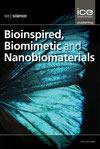Manipulation of protein crystals using a magnetic field by assembling Fe x O y nanoparticles
IF 0.6
4区 工程技术
Q4 ENGINEERING, BIOMEDICAL
引用次数: 0
Abstract
Manipulation of protein crystals using an external field is a topic of growing interest in several fields, such as X-ray crystallography and crystal processing. The aim of this study was to develop a method for manipulating crystals using a magnetic field by assembling iron oxide nanoparticles inside a lysozyme crystal. Poly(vinylpyrrolidone)-stabilised iron oxide nanoparticles, prepared through pulsed laser ablation in a solution, were preferentially incorporated in the {101} sectors rather than in the {110} sectors of the tetragonal lysozyme crystal, similar to the gold (Au) and platinum (Pt) nanoparticles studied previously. To keep the crystals intact in solutions, the outer surface of the nanoparticle-assembled crystal was coated with a pure lysozyme crystal and the coated crystals were introduced into a solution containing glycerol. The pure lysozyme crystal at the surface of the nanoparticle-assembled crystal is less likely to dissolve compared with the nanoparticle-assembled crystal itself. Additionally, glycerol has a delaying effect on the dissolution of crystals owing to its high viscosity. The authors successfully demonstrated the handling of protein crystals by commercially available needle magnets in solution. This method requires a simple device with a low cost, without any requirement for control conditions and energy, thus facilitating easy and inexpensive handling of the crystal.通过组装铁氧纳米粒子,利用磁场操纵蛋白质晶体
在x射线晶体学和晶体加工等领域,利用外场操纵蛋白质晶体是一个越来越受关注的话题。这项研究的目的是通过在溶菌酶晶体内组装氧化铁纳米颗粒来开发一种利用磁场操纵晶体的方法。通过脉冲激光烧蚀在溶液中制备的聚(乙烯吡罗烷酮)稳定的氧化铁纳米颗粒优先结合在四方溶菌酶晶体的{101}区,而不是{110}区,类似于先前研究的金(Au)和铂(Pt)纳米颗粒。为了使晶体在溶液中保持完整,将纳米粒子组装的晶体的外表面涂覆一层纯溶菌酶晶体,并将涂覆的晶体引入含有甘油的溶液中。与纳米粒子组装晶体本身相比,纳米粒子组装晶体表面的纯溶菌酶晶体更不容易溶解。此外,甘油由于其高粘度,对晶体的溶解有延迟作用。作者成功地演示了用市售的针磁铁在溶液中处理蛋白质晶体。该方法需要一个简单的设备,成本低,不需要任何控制条件和能量,从而方便和廉价地处理晶体。
本文章由计算机程序翻译,如有差异,请以英文原文为准。
求助全文
约1分钟内获得全文
求助全文
来源期刊

Bioinspired Biomimetic and Nanobiomaterials
ENGINEERING, BIOMEDICAL-MATERIALS SCIENCE, BIOMATERIALS
CiteScore
2.20
自引率
0.00%
发文量
12
期刊介绍:
Bioinspired, biomimetic and nanobiomaterials are emerging as the most promising area of research within the area of biological materials science and engineering. The technological significance of this area is immense for applications as diverse as tissue engineering and drug delivery biosystems to biomimicked sensors and optical devices.
Bioinspired, Biomimetic and Nanobiomaterials provides a unique scholarly forum for discussion and reporting of structure sensitive functional properties of nature inspired materials.
 求助内容:
求助内容: 应助结果提醒方式:
应助结果提醒方式:


